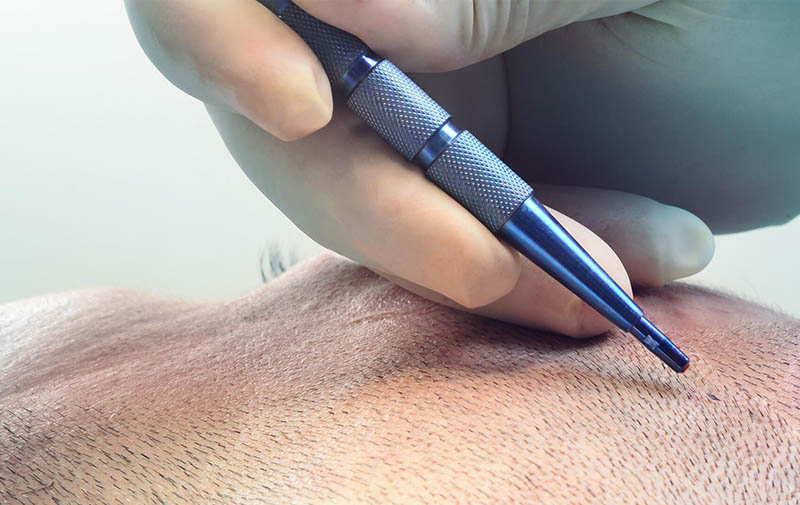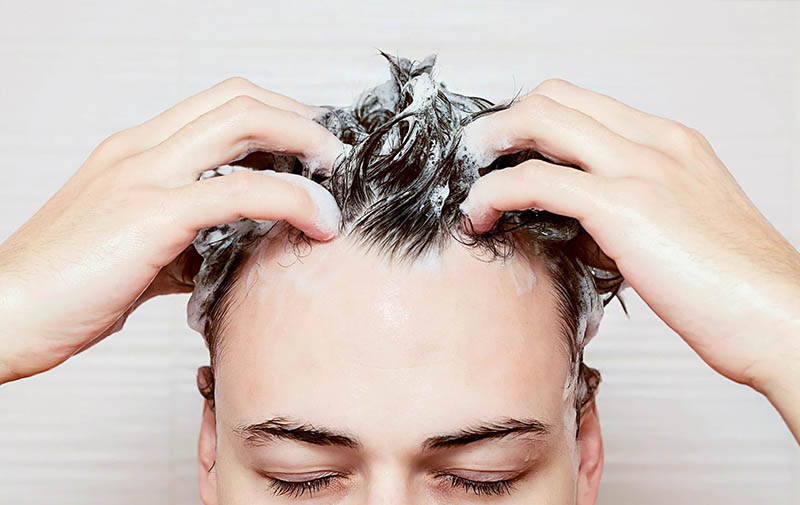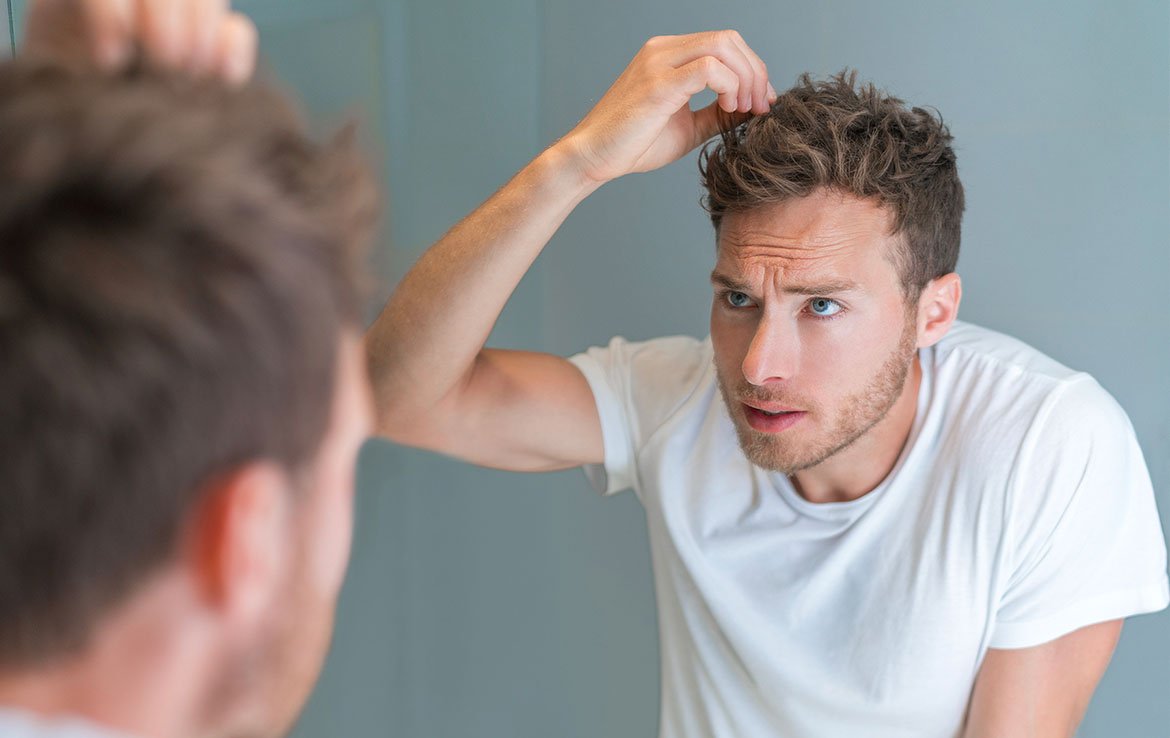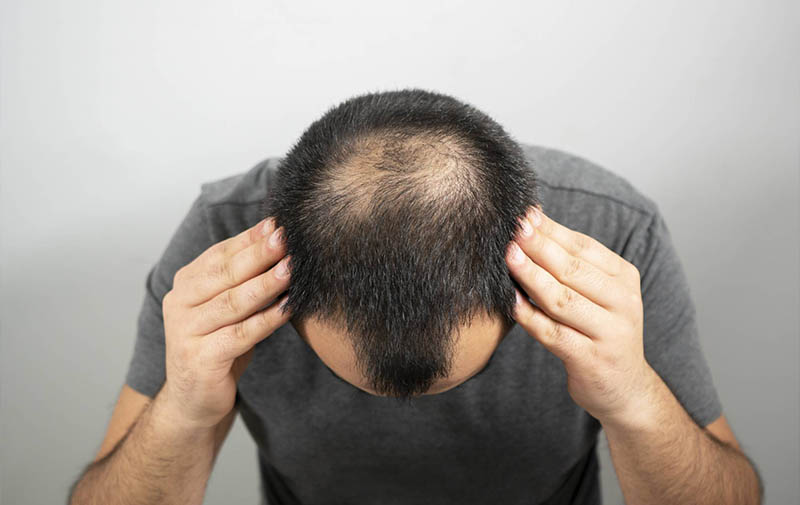
If you find yourself in your mid to late teens, you might have begun to notice the gradual thinning of your hair, particularly around your hairline and temples. While it’s more common for men in their 30s, 40s, and beyond to experience male pattern baldness, the early signs of hair loss can manifest during your teenage years.
Dealing with hair loss can be a source of frustration, but the silver lining is that effective treatments are available. By using a tailored combination of medications and specialized hair care products, you have the power to slow down or even prevent hair loss, preserving your locks well into your 20s, 30s, 40s, and beyond.
In fact, identifying the signs of hair loss early in your youth places you in a prime position to thwart any further hair loss before it becomes a significant issue.
In the following sections, we’ll delve into the reasons behind hair loss, the potential early indicators of balding that you might observe as a teenager, and the scientifically-backed treatments at your disposal, ranging from over-the-counter solutions like minoxidil to prescription medications such as finasteride.
Hair Loss During Your Teenage Years
If you’re a teenager, you may notice the gradual recession of your hairline or some degree of thinning on your scalp. These are often the initial harbingers of male pattern baldness.
Male pattern baldness is the result of a complex interplay between genetic predisposition and hormonal factors. Given the rapid surge in certain hormones during adolescence, hair loss may become noticeable as you reach your mid to late teens.
There are several scientifically validated treatments available to combat male pattern baldness, including FDA-approved medications such as finasteride and minoxidil. These options are certainly worth considering if you’re over the age of eighteen.
It’s crucial to emphasize that these treatments tend to be most effective when initiated at the earliest signs of hair loss, underscoring the importance of taking proactive steps if you’re witnessing the thinning of your hair.
Furthermore, it’s essential to recognize that not all instances of teenage hair loss can be attributed to male pattern baldness. Stress, nutritional deficiencies, underlying medical conditions, and the use of specific medications can also contribute to hair loss.
If you’re grappling with hair loss, it’s prudent to seek guidance with our licensed healthcare professionals at Medical 11 to explore the most suitable options tailored to your unique situation.
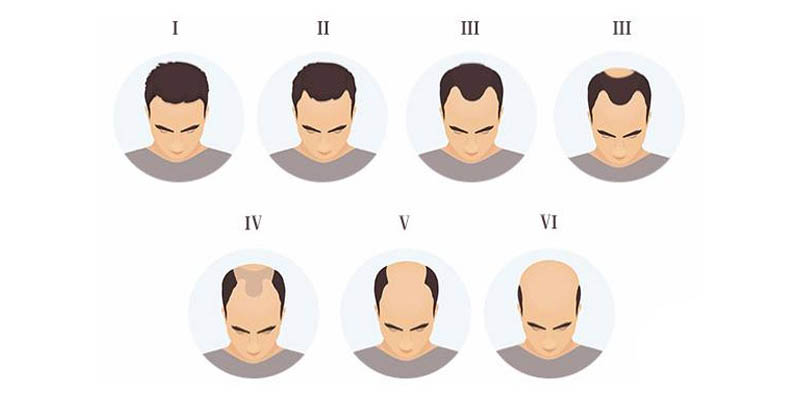
Hair Loss: Causes and Mechanisms
Hair loss can have various underlying causes, ranging from stress and nutritional deficiencies to medication side effects and medical conditions. Nevertheless, the predominant cause of hair loss in men is androgenetic alopecia, commonly known as male pattern baldness.
While male pattern baldness is often associated with men in their 20s, 30s, and 40s, the truth is that it can commence at any age, even in your mid to late teens. In fact, studies indicate that approximately 16 percent of males between the ages of 15 and 17 experience some degree of male pattern baldness during their adolescence, a condition sometimes referred to as adolescent androgenetic alopecia.
If you’re a teenager in your mid to late teens and have noticed thinning or receding hair, rest assured you’re not alone. Contrary to popular misconceptions, hair loss isn’t triggered by wearing hats, using hair products, or other common but erroneous beliefs, which we address in our guide to dispelling hair loss myths.
Male pattern baldness is primarily driven by the interplay between your genetic predisposition and the production of specific male sex hormones within your body. More specifically, hair loss occurs when dihydrotestosterone (DHT), a hormone, binds to receptors in your hair follicles, causing damage to your hair.
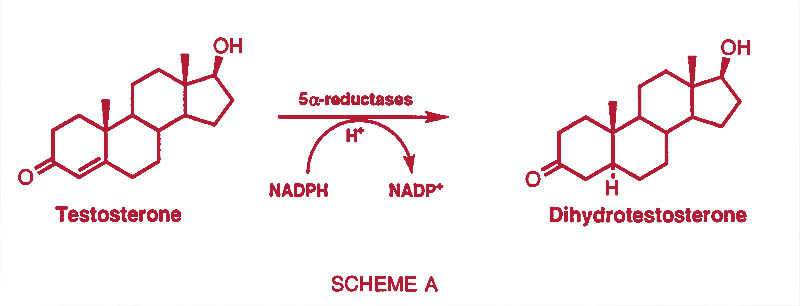
DHT is classified as an androgen hormone, or male hormone, and plays a pivotal role in developing masculine characteristics like broad shoulders, a deep voice, body hair, muscle mass, and strength. Testosterone, arguably the most renowned androgen hormone, is responsible for many masculine attributes.
During your teenage years, your body undergoes a rapid increase in testosterone production. This elevated testosterone level persists for several decades before gradually decreasing as you enter your 30s and 40s. A small portion of the testosterone your body generates is converted into DHT by an enzyme called 5-alpha-reductase.
During your teenage years, DHT serves essential functions, including stimulating the growth of facial hair, pubic hair, and body hair. However, DHT can also attach to receptors in the hair follicles on your scalp, instigating hair loss.
As your testosterone and DHT levels surge during adolescence, you may begin to notice initial signs of DHT-related hair damage, such as thinning, shedding, or a receding hairline. Over time, with prolonged exposure to DHT, these early indications can progress into more noticeable hair loss.
Exploring Other Potential Causes of Hair Loss
While male pattern baldness accounts for most instances of hair loss, there are several other factors that could contribute to hair shedding during your teenage years:
- Nutritional Deficiencies: Various nutritional deficiencies, including iron deficiency and others, can lead to shedding and temporary hair loss. Certain vitamins, such as vitamin C and vitamin D, play vital roles in promoting healthy hair growth.
- Stress, Anxiety, and Psychological Factors: Stress, traumatic experiences, and other psychological stressors can trigger a form of temporary hair loss known as telogen effluvium.
- Medical Conditions and Infections: Certain medical conditions like thyroid disease and hormonal imbalances may result in hair loss. Additionally, scalp infections can lead to hair loss in specific areas of your head.
- Hair Damage: Various forms of damage, such as tension from certain hairstyles, scarring, or follicular damage caused by autoimmune diseases, can impact your hair and lead to temporary or permanent hair loss.
- Medications: Some medications, including certain acne treatments, ADHD medications, and certain drugs used for psychological disorders, may have hair loss as a potential side effect.
Common Indicators of Hair Loss
While it’s uncommon to experience complete baldness as a teenager, you may begin to observe some early signs of male pattern baldness during this phase. These indicators encompass:
- Alterations in Your Hairline: You might detect hair thinning or loss around your temples or along the hairline connecting your scalp and face. This could manifest as your hairline assuming an M or V-like shape as the hair thins around your temples.
- Thinning and/or Hair Loss on Your Scalp: The hair on the top of your head may appear thinner than it once was. This thinning could affect your entire scalp or be concentrated around the crown of your head.
- Hair Loss During Grooming: After showering or brushing your hair, you may notice an increased number of fallen hairs on your hairbrush, comb, or in your shower drain. While it’s normal to lose around 100 hairs daily as part of your hair’s natural growth cycle, an excessive amount of shedding may be an early sign of hair loss.
Understanding these signs can help you identify potential hair loss issues early and take appropriate action.
Exploring the Prevalence of Hair Loss in Teens
It may come as a surprise, but hair loss is a relatively common occurrence among teenagers and young adults. In fact, many young men start noticing the initial signs of hair loss during their final years of high school or their early college years.
As previously mentioned, approximately 16 percent of males aged 15 to 17 encounter some degree of hair loss during this phase of their lives.
In general, the likelihood of experiencing hair loss tends to increase with age. According to insights from the American Hair Loss Association, around two-thirds of men undergo hair loss by the time they reach 35 years of age. By the age of 50, a substantial 85 percent of all men exhibit noticeable hair thinning.
Managing and Preventing Hair Loss in Your Teens
Experiencing hair loss, particularly at a young age, can be a distressing event. It’s entirely normal to feel concerned and apprehensive when you first observe thinning hair or a receding hairline.
The encouraging news is that male pattern baldness, even when it manifests early in life, is a condition that can be effectively managed. While grappling with hair loss during your youth may initially seem like a burden, the truth is that taking prompt action can safeguard your hairline and ensure the preservation of your hair as you age.
It’s essential to bear in mind that the earlier you initiate hair loss treatment, the better your chances of protecting and maintaining a significant portion of your hair.
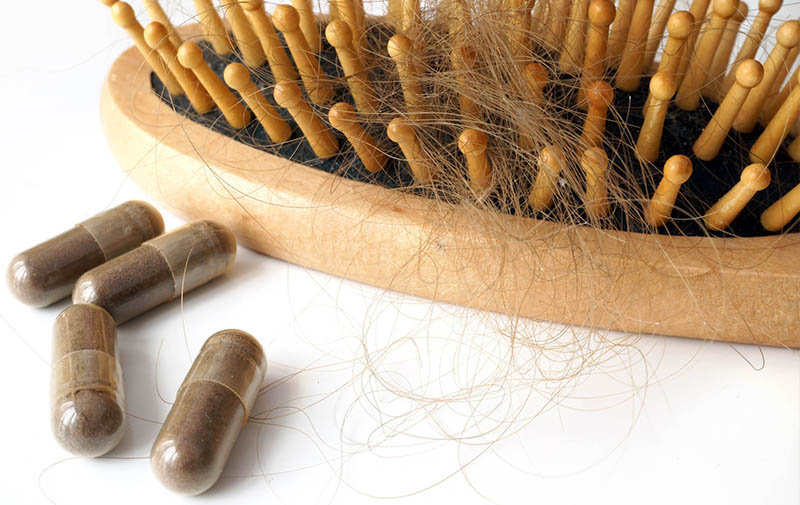
Hair Loss Medications
Currently, the most successful approach to addressing hair loss involves the use of medications. These medications operate by either hindering the production of dihydrotestosterone (DHT), the hormone responsible for male pattern baldness, or by directly stimulating hair growth.
It’s crucial to note that not all hair loss medications are suitable for teenagers. It’s imperative to consult with a healthcare professional before using any medications, including those available over-the-counter, to combat hair loss.
Finasteride
Finasteride is a prescription medication designed to combat male pattern baldness. Its mechanism of action involves inhibiting the 5-alpha-reductase enzyme, which is responsible for converting testosterone into DHT.
By obstructing this conversion process, finasteride reduces DHT levels within the body, thus preventing much of the hair follicle damage associated with DHT and the resulting hair loss.
Research indicates that a standard dosage of finasteride can lower serum DHT levels by more than 70 percent.
In terms of hair loss treatment, finasteride is typically available in a 1mg tablet form. Numerous studies have demonstrated its effectiveness in slowing down and halting hair loss attributed to male pattern baldness. Some studies have even revealed its capacity to stimulate new hair growth in areas of the scalp impacted by hair loss.
In a set of two clinical trials, men with male pattern baldness who used finasteride daily experienced reduced hair loss, increased hair growth, and enhanced hair appearance over a two-year period.
Furthermore, a separate study spanning a decade found that consistent daily use of finasteride prevented hair loss in 99.1 percent of men and boosted hair growth in 91.5 percent of them.
In summary, finasteride not only yields short-term results but also proves effective in the long-term prevention of hair loss.
Like most medications, finasteride may bring about certain side effects, although research indicates that these side effects typically affect only a small percentage of individuals who use this medication.
We offer online access to finasteride for men aged 18 and above, following a consultation with a physician who will determine its appropriateness.
Minoxidil
Minoxidil is a topical medication designed to address hair loss. It is available in liquid or foam forms and is directly applied to areas on the scalp affected by male pattern baldness.
Unlike finasteride, minoxidil does not reduce DHT levels. Instead, it enhances blood flow to the scalp and stimulates hair follicles to enter and remain in the anagen (growth) phase of the hair growth cycle.
Numerous studies have highlighted minoxidil’s effectiveness in enhancing hair growth. In a year-long study involving over 900 men with hair loss, 84.3 percent reported that minoxidil was either highly effective, effective, or moderately effective in promoting hair regrowth.
A scientific review in 2015 further validated minoxidil’s effectiveness in fostering hair growth among men with male pattern baldness.
Notably, minoxidil is available without a prescription, making it a viable option for those who wish to address hair loss without resorting to prescription medications.
Hair Care Products
Certain hair care products can contribute to hair health, stimulate growth, and offer protection against the effects of dihydrotestosterone (DHT), a hormone associated with male pattern baldness. Additionally, hair loss supplements, like biotin, may be effective in enhancing hair growth and addressing specific types of hair loss.
Hair Loss Prevention Shampoo
Utilizing a hair loss prevention shampoo represents a straightforward and cost-effective approach to provide an added layer of defense against DHT-related damage to your hair.
Unlike medications, you can safely use hair loss prevention shampoo at any age, making it a suitable choice for individuals under the age of 18 seeking to safeguard their hair.
When considering hair loss shampoos, keep an eye out for the following active ingredients:
- Ketoconazole: Often found in hair loss shampoos, ketoconazole is an antifungal medication. Research suggests that ketoconazole may have the potential to slow down or halt hair loss by disrupting the impact of DHT.
- Saw Palmetto: Saw palmetto is a herbal ingredient associated with increased hair growth, supported by findings from various studies.
Biotin
Biotin, a B-vitamin, plays a significant role in the hair growth process. While it may not impede or halt hair loss caused by male pattern baldness, biotin supplementation could be beneficial if your hair loss results from a nutritional deficiency.
In Conclusion, Experiencing a receding hairline, thinning hair, or other initial indications of male pattern baldness during your mid to late teens is a relatively common occurrence. While the realization of hair loss can be disheartening, it’s essential to recognize that solutions are readily available to mitigate, halt, and even reverse this process.
The key to effectively managing hair loss lies in early detection. The sooner you become aware of hair loss, the quicker you can take proactive steps to safeguard your hair and prevent further deterioration.
If you suspect you’re in the early stages of hair loss, the best course of action is to consult with a licensed healthcare provider to explore your options. Depending on your age and the extent of your hair loss, you may have the opportunity to employ medications, hair care products, or a combination of both to halt hair loss and preserve your hair as you transition into your 20s, 30s, and beyond.

